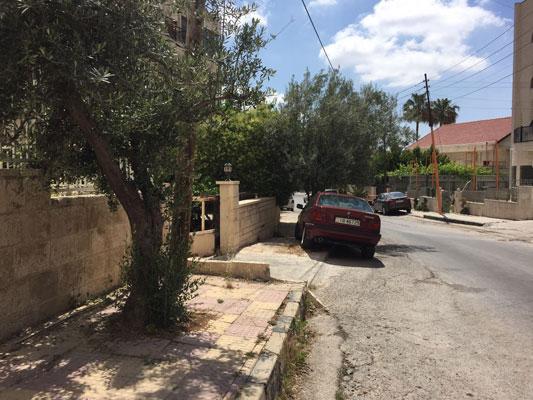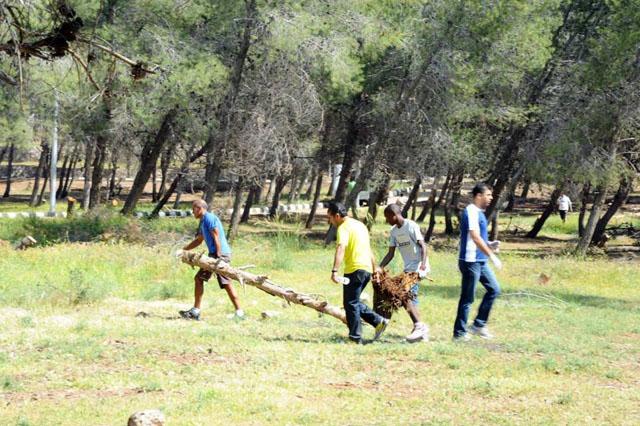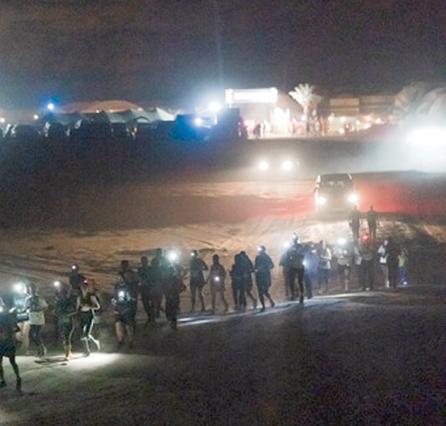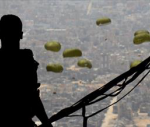You are here
Sidewalks in some Amman areas 'unwalkable', say residents
By Suzanna Goussous - May 19,2016 - Last updated at May 19,2016

A sidewalk blocked by trees is seen in this photo taken in Tlaa Al Ali area on Thursday (Photo by Omar Obeidat)
AMMAN – Sidewalks in several neighbourhoods of the capital are unwalkable as they are either ruptured or blocked by trees, according to residents.
They described the conditions of the pavements as unfriendly for people who like to practice walking, running, or cycling.
"Sidewalks in most of Amman are not pedestrian-friendly," said Batoul Arnaout, an athlete who lives near the Hussein Youth City in central Amman.
“As an athlete, there are limited outdoor places to practice sport or walking, adding that Amman’s sidewalks are either wrecked or have trees planted on them, which impedes the activities of residents.
Practicing cycling as a sport in Amman could also be a problem that subjects residents to physical injuries, she said.
“Most of the sidewalks do not continue on the same level, which makes cycling difficult,” Arnaout added.
Another athlete, Ibrahim Abu Asbeh, agreed, adding that trees beautify the scenery. However, they are “planted in the wrong sites”, which makes running as a sport difficult to be promoted among the people.
Of the sports-friendly places Abu Asbeh believes the area surrounding King Hussein Public Parks, Dabouq, and Khalda are good models, but the story does not end here.
“Even when we find some decent sidewalks, most of the time they are used for the wrong purposes, such as parking cars or as extensions to shops,” he told The Jordan Times.
For example, some areas in East Amman have wide sidewalks but usually occupied by shops and restaurants which place tables or chairs on them or to showcase their goods, said Abu Asbeh, a resident of Jubeiha.
“Many runners, including myself, find it easier to run on streets instead of sidewalks… We have to, since the sidewalks are not prepared for such activities,” he explained.
Another Amman resident who complained of "poorly designed and maintained sidewalks" was Khaled Jaber, who lives in Tlaa Al Ali area.
Sidewalks in the area are wrecked and blocked by trees, he said, adding that residents usually walk on the streets rather than using the "risky" sidewalks.
Ahmad Malkawi, the director of public works affairs at Great Amman Municipality (GAM), said there are plans to rehabilitate sidewalks in the city but it would "take time to renovate a city as old as Amman overnight”.
He noted that a new regulation issued early 2015 entailed taking measurements before constructing a sidewalk, including measurements for telephone booths, trees, curbstones, and identifying sides that are safer for pedestrians to take.
He said that annually, GAM spends around JD6 million on renovating sidewalks according to official specifications and upon the demands of residents.
“Citizens’ demands will be met when we have the financial capability to respond to them, step by step,” he added.
Related Articles
AMMAN — Amani Ammoura has a passion for jogging and cycling, but she feels that practising such sports is dangerous due to lack of safe venu
When Batoul Arnaout used to jog at Al Hussein Youth City, the amount of litter she saw and the number of people smoking argileh in the area irritated her.
WADI RUM — The 13th edition of the Wadi Rum Full Moon Desert Marathon took place in Wadi Rum with the participation of 285 runners from all



















